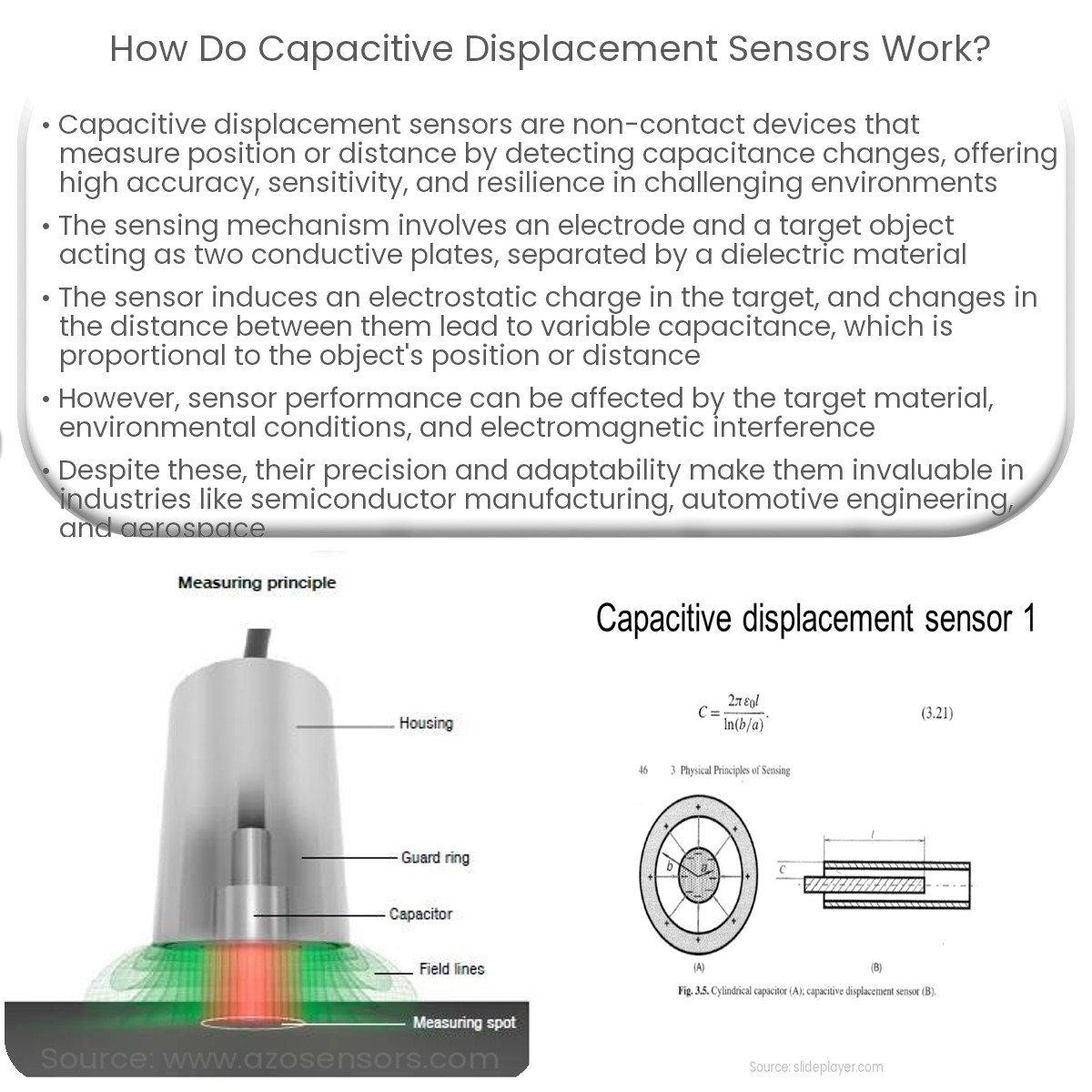Capacitive displacement sensors measure position or distance by detecting capacitance changes between a sensing electrode and a target object.
Capacitive Displacement Sensors: Working Principle
Capacitive displacement sensors are non-contact devices that measure the position or distance of a target object by detecting changes in capacitance. They are widely used in various industries due to their high accuracy, sensitivity, and ability to operate in challenging environments.
Capacitance: The Key Concept
Capacitance is an electrical property that describes the ability of a system to store an electric charge. It is determined by the surface area of the conductive plates, the distance between the plates, and the dielectric constant of the insulating material separating the plates. In capacitive displacement sensors, the target object and the sensor electrode act as the two conductive plates, with a dielectric material (typically air) between them.
How Capacitive Displacement Sensors Work
Capacitive displacement sensors consist of a sensing element, usually a metallic electrode, and a signal conditioning circuit. The sensing element generates an electric field that interacts with the target object, inducing an electrostatic charge. As the distance between the sensor and the target changes, the capacitance between the two plates varies. This capacitance change is proportional to the distance or position of the target object.
- Excitation: An AC voltage is applied to the sensing electrode, generating an electric field between the electrode and the target object.
- Capacitance Change: As the distance between the sensing electrode and the target object changes, the capacitance between them varies.
- Signal Detection: The signal conditioning circuit detects the capacitance change and converts it into a voltage, current, or digital output signal.
- Output Signal Processing: The output signal is then processed and translated into a distance or position measurement.
Factors Affecting Capacitive Displacement Sensor Performance
- Target Material: The target material’s dielectric constant and electrical conductivity can influence the sensor’s performance.
- Environmental Conditions: Temperature, humidity, and pressure variations can affect the dielectric constant of the medium between the sensor and target.
- Electromagnetic Interference: Capacitive sensors can be sensitive to electromagnetic noise, which may cause erroneous readings.
Despite these factors, capacitive displacement sensors are highly valued for their precision, non-contact nature, and ability to operate in a wide range of environments. They are used in applications such as semiconductor manufacturing, automotive engineering, and aerospace, where accurate distance or position measurements are crucial.


